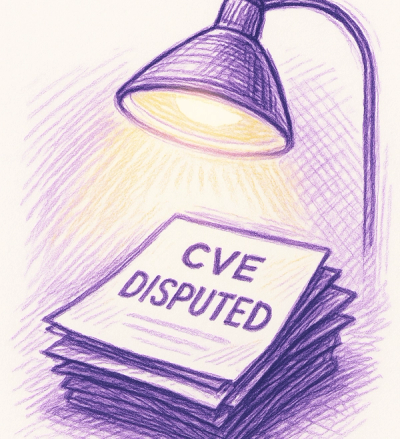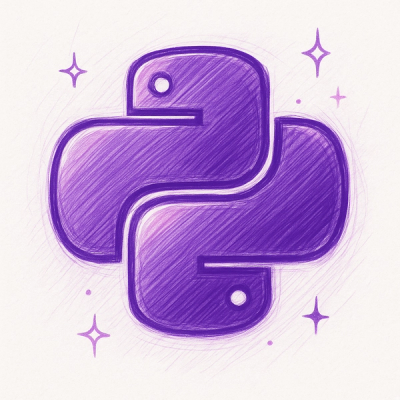
Security News
Google’s OSV Fix Just Added 500+ New Advisories — All Thanks to One Small Policy Change
A data handling bug in OSV.dev caused disputed CVEs to disappear from vulnerability feeds until a recent fix restored over 500 advisories.
@finos/calm-cli
Advanced tools
A set of tools for interacting with the Common Architecture Language Model (CALM)
A command line interface to interact with the CALM schema. You can use these tools to create an architecture from a CALM pattern, or validate that an architecture conforms to a given pattern.
Install the CLI on to your machine with this command:
% npm install -g @finos/calm-cli
Type calm into your terminal, and you should see the help text printed out.
% calm
Usage: calm [options] [command]
A set of tools for interacting with the Common Architecture Language Model (CALM)
Options:
-V, --version output the version number
-h, --help display help for command
Commands:
generate [options] Generate an architecture from a CALM pattern file.
validate [options] Validate that an architecture conforms to a given CALM pattern.
copilot-chatmode [options] Augment a git repository with a CALM VSCode chatmode for AI assistance.
server [options] Start a HTTP server to proxy CLI commands. (experimental)
template [options] Generate files from a CALM model using a Handlebars template bundle.
docify [options] Generate a documentation website off your CALM model.
help [command] display help for command
This command lets you create a shell of an architecture from a pattern file.
You can try it out using the example patterns provided in this repo under calm/pattern.
calm
Usage: calm generate [options]
Generate an architecture from a CALM pattern file.
Options:
-p, --pattern <file> Path to the pattern file to use. May be a file path or a URL.
-o, --output <file> Path location at which to output the generated file. (default: "architecture.json")
-s, --schema-directory <path> Path to the directory containing the meta schemas to use. (default: "../calm/release")
-v, --verbose Enable verbose logging. (default: false)
-h, --help display help for command
The most simple way to use this command is to call it with only the pattern option, which will generate an architecture with the default filename architecture.json in the current working directory.
% calm generate -p calm/pattern/api-gateway.json
This command will tell you if an architecture matches a pattern that you provide. If it doesn't, then it will output a list of problems that you can address to help your architecture conform to the pattern.
% calm validate --help
Usage: calm validate [options]
Validate that an architecture conforms to a given CALM pattern.
Options:
-p, --pattern <file> Path to the pattern file to use. May be a file path or a URL.
-a, --architecture <file> Path to the pattern architecture file to use. May be a file path or a URL.
-s, --schema-directory <path> Path to the directory containing the meta schemas to use. (default: "../calm/release")
--strict When run in strict mode, the CLI will fail if any warnings are reported. (default: false)
-f, --format <format> The format of the output (choices: "json", "junit", default: "json")
-o, --output <file> Path location at which to output the generated file.
-v, --verbose Enable verbose logging. (default: false)
-h, --help display help for command
This command can output warnings and errors - the command will only exit with an error code if there are errors present in the output. Warnings are sometimes provided as hints about how to improve the architecture, but they are not essential for the architecture to match the pattern.
If you were to try and generate an architecture from the api-pattern, and then validate the architecture against that pattern like this
% calm generate -p calm/pattern/api-gateway.json
% calm validate -p calm/pattern/api-gateway.json -a architecture.json
You would get an output which includes a warning like this:
...
{
"jsonSchemaValidationOutputs": [],
"spectralSchemaValidationOutputs": [
{
"code": "architecture-has-no-placeholder-properties-string",
"severity": "warning",
"message": "String placeholder detected in architecture.",
"path": "/nodes/0/interfaces/0/host",
"schemaPath": "",
"line_start": 10,
"line_end": 10,
"character_start": 18,
"character_end": 30
},
{
"code": "architecture-has-no-placeholder-properties-numerical",
"severity": "warning",
"message": "Numerical placeholder (-1) detected in architecture.",
"path": "/nodes/0/interfaces/0/port",
"schemaPath": "",
"line_start": 11,
"line_end": 11,
"character_start": 18,
"character_end": 20
},
{
"code": "architecture-has-no-placeholder-properties-string",
"severity": "warning",
"message": "String placeholder detected in architecture.",
"path": "/nodes/0/well-known-endpoint",
"schemaPath": "",
"line_start": 14,
"line_end": 14,
"character_start": 29,
"character_end": 56
},
{
"code": "architecture-has-no-placeholder-properties-string",
"severity": "warning",
"message": "String placeholder detected in architecture.",
"path": "/nodes/2/interfaces/0/host",
"schemaPath": "",
"line_start": 31,
"line_end": 31,
"character_start": 18,
"character_end": 30
},
{
"code": "architecture-has-no-placeholder-properties-numerical",
"severity": "warning",
"message": "Numerical placeholder (-1) detected in architecture.",
"path": "/nodes/2/interfaces/0/port",
"schemaPath": "",
"line_start": 32,
"line_end": 32,
"character_start": 18,
"character_end": 20
}
],
"hasErrors": false,
"hasWarnings": true
}
...
which is just letting you know that you have left in some placeholder values which might have been generated with the generate command. This isn't a full break, but it implies that you've forgotten to fill out a detail in your architecture.
It may be required to have the operations of the CALM CLI available over rest.
The validate command has been made available over an API
calm server --schema-directory calm
curl http://127.0.0.1:3000/health
# Missing schema key
curl -H "Content-Type: application/json" -X POST http://127.0.0.1:3000/calm/validate --data @cli/test_fixtures/validation_route/invalid_api_gateway_instantiation_missing_schema_key.json
# Schema value is invalid
curl -H "Content-Type: application/json" -X POST http://127.0.0.1:3000/calm/validate --data @cli/test_fixtures/validation_route/invalid_api_gateway_instantiation_schema_points_to_missing_schema.json
# instantiation is valid
curl -H "Content-Type: application/json" -X POST http://127.0.0.1:3000/calm/validate --data @cli/test_fixtures/validation_route/valid_instantiation.json
The copilot-chatmode command sets up AI-powered development assistance for CALM architecture modeling by configuring a specialized VSCode chatmode with comprehensive tool prompts.
calm copilot-chatmode --help
Usage: calm copilot-chatmode [options]
Augment a git repository with a CALM VSCode chatmode for AI assistance
Options:
-d, --directory <path> Target directory (defaults to current directory) (default: ".")
-v, --verbose Enable verbose logging. (default: false)
-h, --help display help for command
This command creates a .github/chatmodes/CALM.chatmode.md configuration file that provides GitHub Copilot with specialized knowledge about CALM architecture modeling, including:
To set up AI assistance for your CALM project:
# In your project directory
calm copilot-chatmode
# Or specify a different directory
calm copilot-chatmode --directory /path/to/your/calm-project
This will create the necessary VSCode configuration files to enable CALM-specific AI assistance. Once set up, you can use GitHub Copilot Chat with specialized CALM tools that understand schema requirements, validation rules, and best practices.
The chatmode includes specialized tools for each CALM component:
Each tool includes complete schema definitions, validation rules, realistic examples, and cross-references to related tools.
The CALM Template system allows users to generate different machine or human-readable outputs from a CALM model by providing a template bundle.
calm template --help
Usage: calm template [options]
Generate files from a CALM model using a Handlebars template bundle.
Options:
-a, --architecture <path> Path to the CALM model JSON file.
-o, --output <path> Path to output directory.
--clear-output-directory Completely delete the contents of the output path before generation.
-b, --bundle <path> Path to the template bundle directory.
-t, --template <path> Path to a single .hbs or .md template file
-d, --template-dir <path> Path to a directory of .hbs/.md templates
-u, --url-to-local-file-mapping <path> Path to mapping file which maps URLs to local paths.
-v, --verbose Enable verbose logging. (default: false)
-h, --help display help for command
calm template will create the output directory if it does not exist.
If the output directory exists, files will be modified if they already
exist. Files that are not in the template bundle will be unmodified.
The --clear-output-directory option changes this behaviour to delete all
files and subdirectories from the output path first.
A template bundle consists of:
index.json: Defines the structure of the template and how it maps to CALM model elements.
A CalmTemplateTransformer implementation: Transforms the CALM model into a format that can be rendered by Handlebars.
Handlebar templates define the final output format.
The --url-to-local-file-mapping option allows you to provide a JSON file that maps external URLs to local files.
This is useful when working with files that are not yet published but are referenced in the model.
Example content
```json
{
"https://calm.finos.org/docuflow/flow/document-upload": "flows/flow-document-upload.json"
}
```
Sample usage would be as follows (assuming at root of project)
calm template -a ./cli/test_fixtures/template/model/document-system.json -b cli/test_fixtures/template/template-bundles/doc-system -o one_pager -u cli/test_fixtures/template/model/url-to-file-directory.json -v
The CALM Docify command generates documentation from a CALM model.
calm docify --help
Usage: calm docify [options]
Generate a documentation website off your CALM model.
Options:
-a, --architecture <path> Path to the CALM model JSON file.
-o, --output <path> Path to output directory.
--clear-output-directory Completely delete the contents of the output path before generation.
-t, --template <path> Path to a single .hbs or .md template file
-d, --template-dir <path> Path to a directory of .hbs/.md templates
-u, --url-to-local-file-mapping <path> Path to mapping file which maps URLs to local paths.
-v, --verbose Enable verbose logging. (default: false)
-h, --help display help for command
calm docify will create the output directory if it does not exist.
If the output directory exists, files will be modified if they already
exist. Other files will be unmodified.
The --clear-output-directory option changes this behaviour to delete all
files and subdirectories from the output path first.
Sample usage for you to try is as follows (assuming at root of project)
calm docify -a ./cli/test_fixtures/template/model/document-system.json -o ./output/documentation -u ./cli/test_fixtures/template/model/url-to-file-directory.json
FAQs
A set of tools for interacting with the Common Architecture Language Model (CALM)
The npm package @finos/calm-cli receives a total of 251 weekly downloads. As such, @finos/calm-cli popularity was classified as not popular.
We found that @finos/calm-cli demonstrated a healthy version release cadence and project activity because the last version was released less than a year ago. It has 4 open source maintainers collaborating on the project.
Did you know?

Socket for GitHub automatically highlights issues in each pull request and monitors the health of all your open source dependencies. Discover the contents of your packages and block harmful activity before you install or update your dependencies.

Security News
A data handling bug in OSV.dev caused disputed CVEs to disappear from vulnerability feeds until a recent fix restored over 500 advisories.

Research
/Security News
175 malicious npm packages (26k+ downloads) used unpkg CDN to host redirect scripts for a credential-phishing campaign targeting 135+ organizations worldwide.

Security News
Python 3.14 adds template strings, deferred annotations, and subinterpreters, plus free-threaded mode, an experimental JIT, and Sigstore verification.